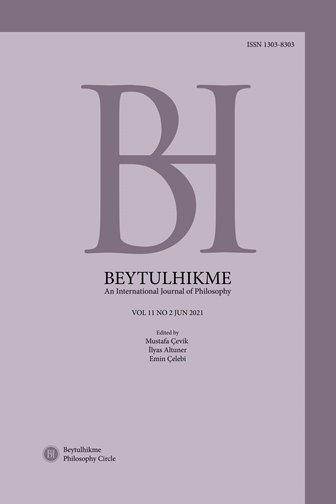Author :
Abstract
Bu makale, insan zihinsel yapısının oluşumu da dahil olmak üzere, kültürün özelliklerinin tüm sosyal alan üzerindeki belirleyici etkisine dayandırılan bazı felsefi yaklaşımları incelemektedir. Başka bir deyişle, yazarları, toplum ve kültürün o kadar yakından bağlantılı olduğunu, örneğin kültürel veya medeniyetsel çöküş sürecinin, ayrı bir unsuru insan birey olan birçok kilit sosyal sistemin çökmesine neden olduğunu iddia ediyorlar. Modern ve postmodern kültürel yansımaların özgül dinamiği ışığında, çağdaş kültür teorisinde iki ana yaklaşımın karşılaşması en çok dikkat çekmeye değer. Postyapısalcı söylem ve sözde medeniyet yorumu da dahil olmak üzere yapısalcılığa belirli varyasyonlarında atıfta bulunuyoruz. Her iki yönün temsilcilerine göre, sosyal sistemin temeli kültürdür. Bu yaklaşımların farklılığı, kültür-medeniyetin kökenlerine ilişkin farklı bakış açılarından kaynaklanmaktadır. Bu yazının amacı, bu iki yön arasındaki farkı açıklığa kavuşturmaktır.
Keywords
Abstract
This paper examines some philosophical approaches, within frameworks of which have been grounded in the determining influence of characteristics of culture on the whole social field, including the formation of human mental structure. In other words, their authors claim that society and culture are so closely linked, that the process of cultural or civilizational decadence, for example, causes to decline of many key social systems, a separate element of which is the human individual. In the light of the specific dynamic of modern and postmodern cultural reflections, it is worth paying most attention to the encounter of two main approaches in contemporary theory of culture. We are referring to structuralism in its certain variations, including the poststructuralist discourse and, the so-called civilization interpretation. According to representatives of both these directions, it is the culture that is the basis of the social system. The divergence of these approaches consists in their different perspectives on the origins of culture-civilization. The purpose of this paper is to clarify the difference between these two directions.
Keywords
- Deleuze G. and Guattari F. 1983. Anti-Oedipus. Capitalism and Schizophrenia. Trans- lated by R. Hurley, M. Seem and H. R. Lane, University of Minnesota Press, Minneapolis.
- Huntington, Samuel P.1997. The Clash of Civilizations and the Remaking of World Or- der. India: Penguin Books.
- Ray L. 2013. Mark of Cain: Shame, desire and violence. European Journal of Social The- ory, 16 (3). https://doi.org/10.1177/1368431013476536
- Rougemont, Denis de. 1983. Love in the Western World. Translated by Montgomery Belgion. Princeton, N.J.: Princeton University Press.
- Sajtarly, I. & Utiuzh, I. 2020. Why the poststructuralist refutation of psychoanalysis should not be trusted? Humanities Studies: Collection of Scientific Papers / Ed. V. Voronkova. Zaporizhzhiа: Zaporizhzhia National University, 5 (82).
- Sinisˇa Malesˇevic ́. 2013. Forms of brutality: Towards a historical sociology of violence. European Journal of Social Theory, 16 (3) 273–291, http:/www.sagepub.co.uk/journalsPermissions.nav DOI: 10.1177/1368431013476524 est.sagepub.com
- Smith, D. 2001. Norbert Elias and modern social theory. SAGE Publications /London · Thousand Oaks · New Delhi, published in association with Theory, Culture & Society, Nottingham Trent University





